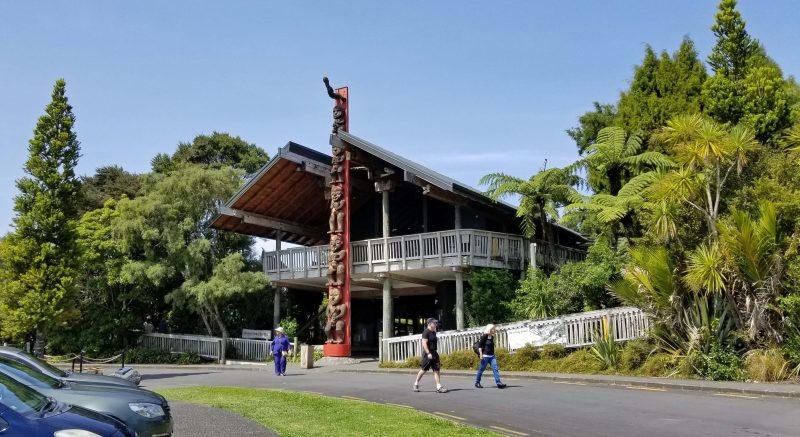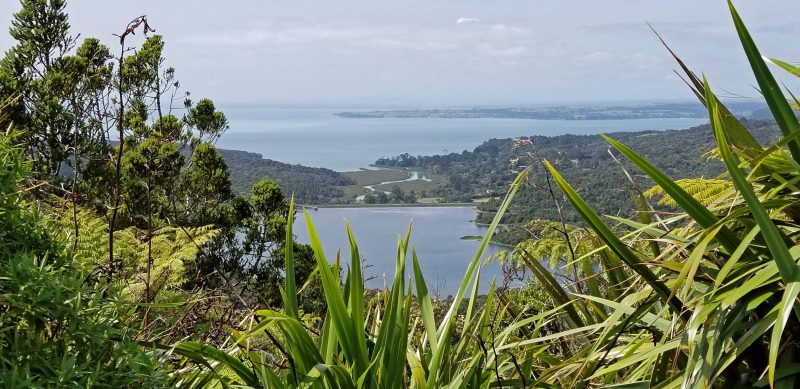Today, Ted and I had a six-hour tour of Auckland and the nearby countryside. Mostly, the drive through the city looked very similar to driving through any American city.
Author’s note: Europe is very different from the U.S.–very old (dating back to medieval times), very crowded, and still using what are probably the original cobblestone streets. Australia and New Zealand are “new” to Westerners (1600s), and there’s lots of space, so we saw many SUVs and superhighways, skyscrapers, and not a single castle or ancient cathedral.
Cornwall Park, however, was unusual. There were lots of joggers, bicyclists, and walkers (Auckland must have a very fit population), but the unusual part was that the park includes a working farm–a condition of the land acquisition. As a result, there are many beautiful park vistas, and also grazing cattle and sheep.

New Zealand has a huge dairy industry. Its biggest customer is China, with a very high demand for NZ powdered milk.

NZ’s merino sheep are famous for their wool. Merino wool feels very soft and silky, and I would have loved to buy a merino wool sweater for myself. Unfortunately, even though it’s very fine/thin, merino wool is also very warm, and I knew I wouldn’t wear the sweater except on the one or two extremely cold days we get in St. Louis each winter. Darn!

After the morning city tour, we had lunch at the Soljan’s Estate Winery, just outside of Auckland. The food was delicious, of course, and so was the wine. We’ve eaten at a number of wineries on our overseas trips and it’s making me think that Ted and I should go to lunch more often at some of the Missouri wineries in the Augusta wine district, only about 20 minutes from our house.


After lunch, we went to Waitakere Ranges Regional Park, a nature preserve which provides a protected habitat for the kauri tree.

The kauri tree is unique because it produces very hard wood that doesn’t rot, making it ideal for building boats and buildings. It also grows very straight and tall–even the branches grow straight out from the trunk–and it is knot-less, so there is little waste when it is cut for lumber. Kauri trees are slow-growing and live for 600-1,000 years, so it takes time to replace them. The kauri tree used to be abundant in New Zealand, but it was cut to the point of near extinction (fewer than 19,000 acres of kauri trees remain) and is now protected by law.

There were several nature trails in the park, so Ted and I chose one and took a lovely walk in the woods. Before embarking on the trail, we were required to clean the soles of our shoes on stiff rolling brushes, then spray them with a disinfectant to avoid bringing contaminants into the forest. When we returned, we had to clean our shoes again before re-joining our group.



The park is set atop a high hill, with beautiful views from some of the trails and from the visitors’ center. If you need guidance, take your picture here.

Yes, it is a good place to take a picture. This is the view from inside the frame in the photo above.

The final leg of our excursion today took us to Auckland’s north shore, and then to Devonport Village, a quaint little town with lots of little shops. Neither Ted nor I wanted to spend our time shopping, so we sat on a park bench and talked with a young New Zealand man for an hour, which was far more interesting. His mother is currently visiting friends and family in Chicago and Toronto. It’s definitely a small world, isn’t it?
